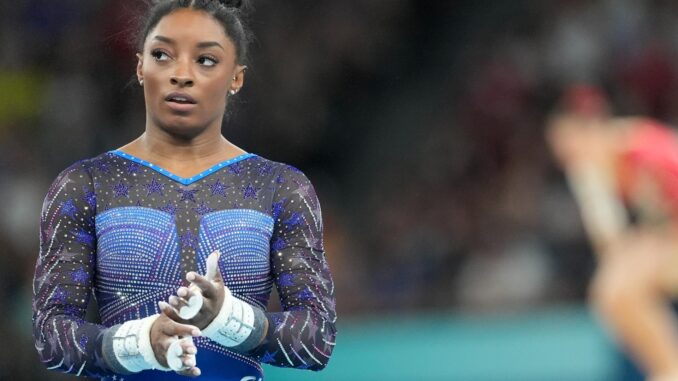
While the benefits of a sponsor associating itself with an elite athlete might be obvious, fronting campaigns for brands which invest millions in marketing around the world can also take a sportsperson’s profile to the next level.
However, gone are the days when athletes were mere spokespeople for the products they were paid to promote or voiceless participants in a brand’s advertising campaign. Today’s sportspeople are collaborating with rather than simply endorsing their sponsors, challenging them to showcase their off-field lives and support the causes they believe in. So, to mark the launch of the 16th edition of 50MM, SportsPro highlights some of the campaigns and collaborations which demonstrate how today’s most marketable sportspeople are rewriting the rules of athlete endorsement together with their partners.
In today’s hyper-connected, influencer-driven marketplace, athletes aren’t just competitors — they’re brands in themselves. From LeBron James to Naomi Osaka, the most marketable athletes in the world are rewriting the rules of sports marketing and redefining what it means to represent a brand. Let’s dive into eight powerful ways these global icons are showing up for brands, boosting visibility, trust, and emotional connection like never before.
1. Building Authentic, Long-Term Partnerships
Gone are the days when athletes just signed a one-off endorsement deal. Today’s stars are forming long-term, authentic collaborations with brands they truly align with.
Take Roger Federer and Rolex, for instance. Their relationship isn’t just transactional — it’s built on shared values of excellence, legacy, and precision. Fans can feel that authenticity, and that’s what drives loyalty and sales.
Why It Works
Authenticity breeds trust. When an athlete genuinely believes in a brand, audiences buy into both.
2. Becoming Brand Co-Creators, Not Just Ambassadors
Modern athletes don’t just wear logos — they help create them. From designing product lines to investing in startups, they’re taking ownership of the brands they represent.
Serena Williams co-designed Nike collections that celebrate diversity and empowerment, while Lionel Messi launched his own lifestyle brand, The Messi Store, to expand beyond football.
Why It Works
Co-creation blurs the line between marketing and personal storytelling — fans see their idols as innovators, not just endorsers.
3. Owning Their Narrative Through Social Media
Social media has given athletes the megaphone they always wanted. Platforms like Instagram, TikTok, and X (Twitter) have turned them into powerful storytellers and content creators.
Think about Cristiano Ronaldo’s Instagram presence — he’s not just selling products, he’s selling his life. From training clips to family moments, his posts keep followers emotionally connected, which translates directly into brand engagement.
Pro Tip for Brands
Athletes with strong social media voices humanize your message. It’s not a commercial — it’s a conversation.
4. Taking Stands on Social and Cultural Issues
The most marketable athletes understand that fans admire courage as much as skill. From Colin Kaepernick’s stance on racial justice to Naomi Osaka’s advocacy for mental health, today’s stars are using their platforms for purpose.
And brands are taking note — aligning themselves with athlete advocates to demonstrate authenticity and social responsibility.
Why It Works
Purpose-driven marketing builds deep emotional resonance. Consumers want to buy from brands that stand for something.
5. Embracing the Digital Era: NFTs, Gaming, and Virtual Worlds
Athletes are leaping into the future — from launching NFT collections to partnering with gaming platforms and the metaverse.
For example, LeBron James collaborated with Fortnite and Meta to create virtual experiences that reach millions of fans online. These digital ventures are expanding brand visibility far beyond the physical arena.
Why It Works
Gen Z audiences live online. Digital integration ensures athletes and brands stay relevant in their world.
6. Creating Culturally Relevant Campaigns
The best athlete-brand partnerships aren’t just global — they’re cultural moments. When athletes tap into music, fashion, and film, they transform marketing into art.
Take Lewis Hamilton’s partnership with Tommy Hilfiger. It fuses motorsport with streetwear culture, making both the athlete and the brand cooler and more relatable.
Why It Works
Culture drives attention. When an athlete lives at the intersection of sports and style, the message hits harder.
7. Launching Their Own Business Ventures
Many of today’s top athletes are becoming entrepreneurs and investors. They’re not just endorsing brands — they’re building them.
Michael Jordan’s Air Jordan line revolutionized athlete branding. More recently, athletes like Kevin Durant and Alex Morgan have launched their own media companies and product lines, giving them creative control.
Why It Works
Ownership equals power. Athletes who build empires create enduring influence that transcends their playing days.
8. Humanizing the Brand with Real-Life Stories
Audiences crave real stories — the triumphs, the struggles, the behind-the-scenes moments. When athletes share vulnerability, brands become more human, too.
For instance, Simone Biles’ openness about mental health challenges made her partnerships with brands like Athleta and Visa feel deeply personal and empowering.
Why It Works
Emotion drives connection. Vulnerability turns marketing into storytelling — and stories sell.
9. Integrating Data and Personalization
Athletes and brands are now leveraging data analytics to create hyper-personalized fan experiences. Whether it’s wearable fitness devices or interactive campaigns, personalization is driving next-level engagement.
Example
Nike’s collaboration with athletes integrates real-time performance data into product design, ensuring fans get gear that feels tailor-made.
10. Collaborating Across Borders
The new generation of marketable athletes transcends geography. From Kylian Mbappé’s global appeal to Shohei Ohtani’s cross-cultural fandom, brands are using international athletes to bridge diverse audiences.
Why It Works
Global representation amplifies reach. Fans love seeing athletes who unite cultures under one brand story.
11. Leveraging Multimedia Storytelling
Podcasts, documentaries, YouTube series — athletes are taking control of their own media narratives. These storytelling formats let them go deeper than a 30-second ad ever could.
Think of “The Last Dance” — it didn’t just revive Michael Jordan’s legacy; it reignited global love for Nike’s Jordan brand.
12. Partnering with Purpose-Driven Brands
Consumers can spot inauthenticity from miles away. That’s why athletes are increasingly aligning with brands that reflect their personal missions — sustainability, equality, wellness, or community impact.
Example
Tennis star Emma Raducanu’s partnerships with Dior and HSBC reflect her balance of youth, ambition, and responsibility.

13. Turning Fans into Communities
Athletes are transforming their fanbases into loyal brand tribes. They engage through challenges, exclusive drops, and fan-led initiatives, turning passive followers into active brand ambassadors.
Why It Works
Community equals retention. When fans feel included, they stay — and they buy.
14. Reinventing Post-Career Branding
Retirement isn’t the end anymore; it’s a new beginning. Athletes like David Beckham and Shaquille O’Neal have successfully rebranded themselves as media moguls and entrepreneurs, proving longevity beyond sport.
Why It Works
Post-career branding keeps athlete influence alive, extending their impact — and their brand partnerships — for decades.
15. Using Storytelling to Inspire, Not Just Sell
The most effective athlete partnerships don’t feel like ads — they feel like inspiration. By focusing on storytelling that uplifts, motivates, and connects emotionally, athletes help brands sell purpose, not just products.
Conclusion: The New Era of Athlete Branding
The world’s most marketable athletes aren’t just selling sneakers or watches — they’re selling belief. They’ve evolved from endorsers to entrepreneurs, from spokespeople to storytellers.
For brands, partnering with these athletes means more than a logo on a jersey — it’s a connection to passion, purpose, and authenticity. The playbook has changed, and the athletes are calling the shots.
